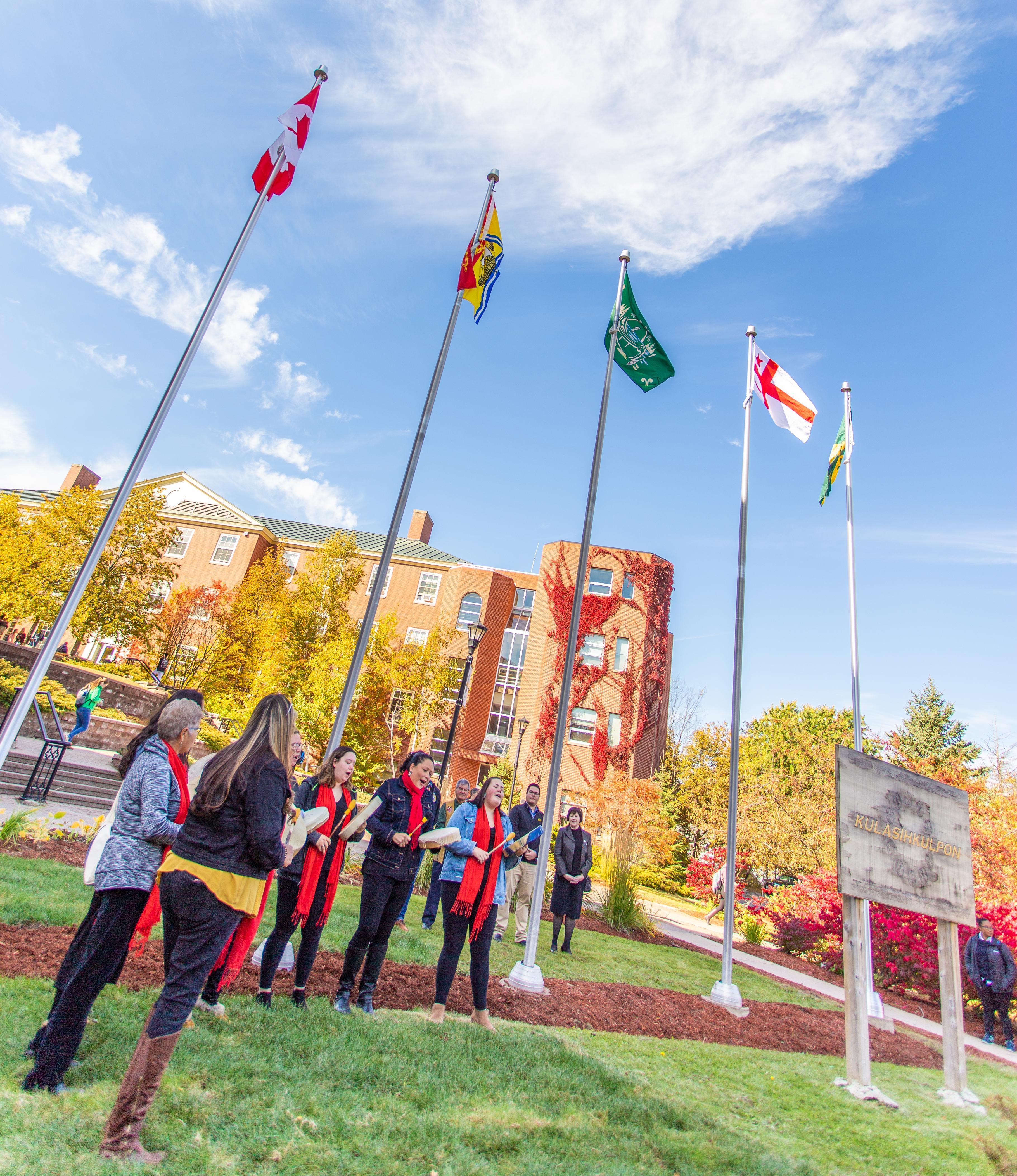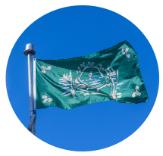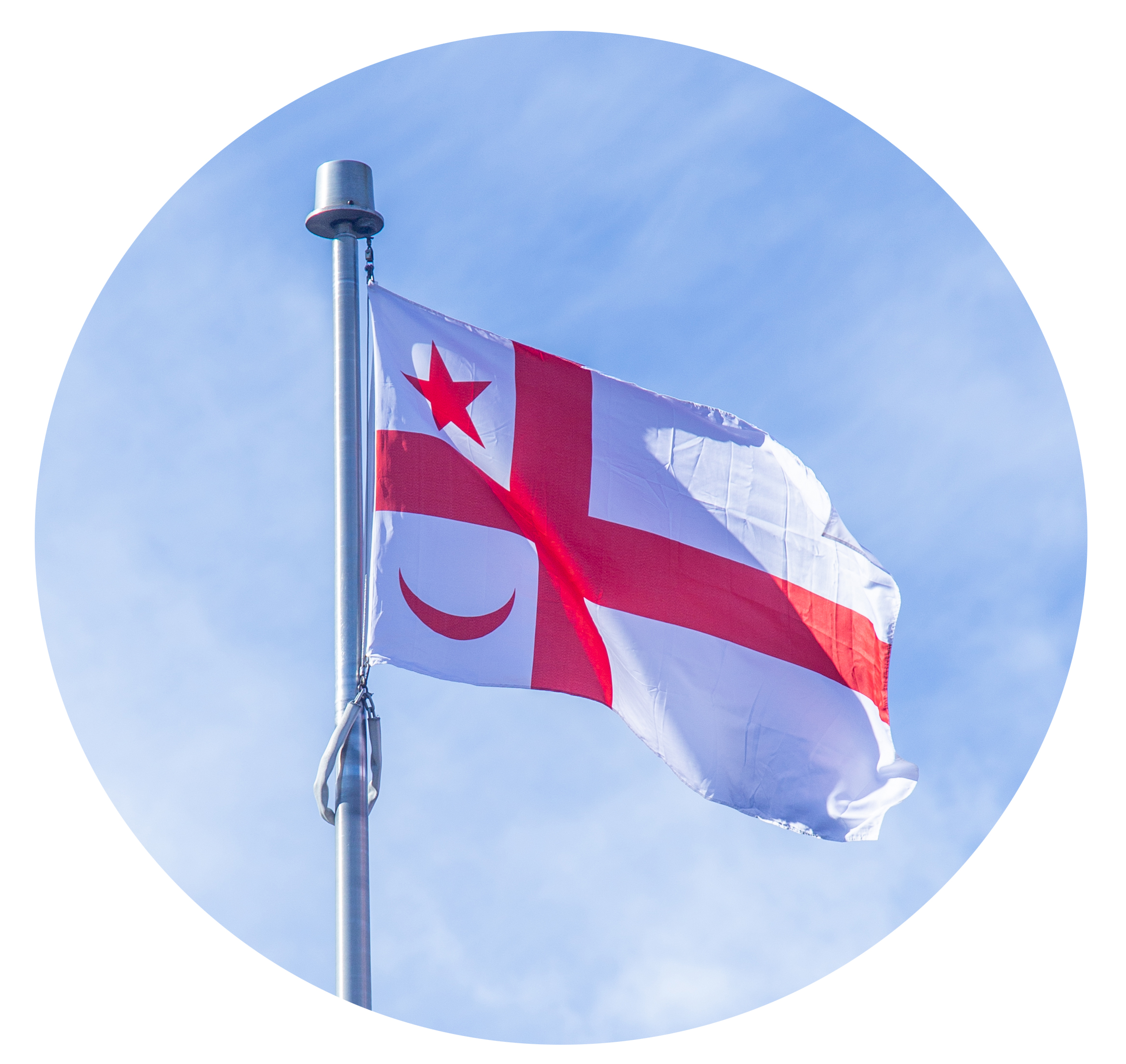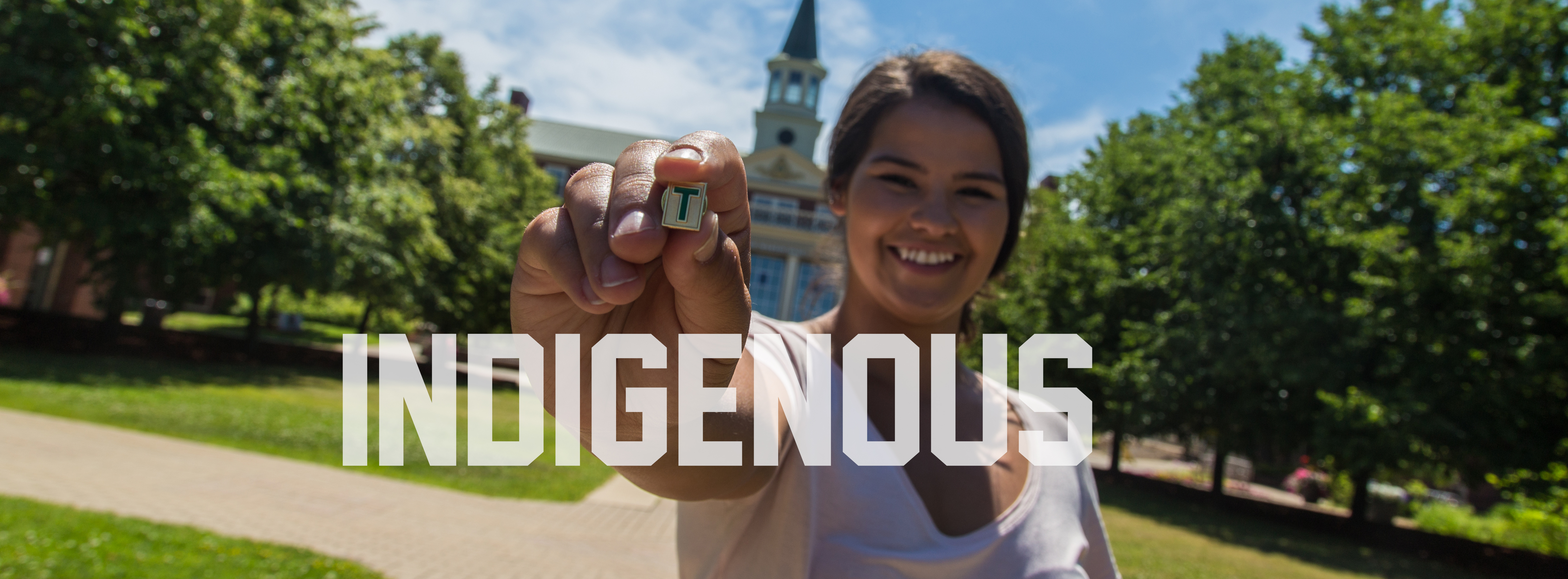Wolastoqiyik (Maliseet) and Mi'kmaq Flag Raising
 On October 15, 2017, St. Thomas University held a flag raising ceremony to commemorate the permanent addition of the Wəlastəkewiyik (Maliseet) and Mi'kmaq flags on campus. The two flags fly alongside the Canada, New Brunswick, and St. Thomas flags in the lower courtyard.
On October 15, 2017, St. Thomas University held a flag raising ceremony to commemorate the permanent addition of the Wəlastəkewiyik (Maliseet) and Mi'kmaq flags on campus. The two flags fly alongside the Canada, New Brunswick, and St. Thomas flags in the lower courtyard.
St. Thomas University is located on the traditional territory of the Wəlastəkewiyik. Prior to moving to Fredericton, St. Thomas University and College was previously located in Chatham, which is the traditional territory of the Mi’kmaq.
Flag Descriptions
 Wolastoqwiyik Nation flag
Wolastoqwiyik Nation flag
The Wolastoqwiyik Nation flag incorporates many elements that are culturally significant. The canoe and paddle represent our ancestral technology of transportation of the birchbark canoe and ash paddle. The river symbolizes not only who we are as People of the Beautiful River, Wolastoqwiyik, but also our river highway that keeps us connected to all of our communities. The fiddlehead double curve designs in the corners are emblematic of our symbol for life, generations past and present and our traditional food source. The colours in those designs incorporate the four sacred colors of creation and the colors blue for water and tan for the land and islands. The salmon in the center has been another source of sustenance for our people and embodies the spirit of resilience and strength of our people. The deep green of the flag itself represents the earth. The flag is used by all of the Wolastoqwiyik Nation and is respected as a symbol of our unity. (Description by Cyril Sacobie, KFN)
 Mi'kmaq Flag
Mi'kmaq Flag
Commonly refered to as the Santéé Mawióómi flag or the Míkmaq Grand Council Flag, the wapéék (white) denotes the purity of Creation, mekwéék klujjewey (red cross) represents mankind and infinity (four directions), náákúúset (sun) representes forces of the day, and tepkunaset (moon) signifies forces of the night.
